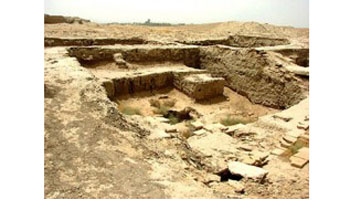
The site is the only archaeological discovery at the Middle Euphrates Region which belongs to the booming phase of the Neolithic era.
The Neolithic era (New Stone Age), was a period in the development of human technology, begining about 9500 BC in the Middle East that is traditionally considered the last part of the Stone Age.
The adjacent houses built along the two sides of the village yard show the greatness of the architectural style at that period.
Archaeologist Yarub al-Abdullah said "The number of the unearthed houses has amounted to 188, each house includes three rooms built of dry brick while the floors and walls were painted with mud or plaster."
Some walls were decorated with colorful paintings representing ducks and goose, he added.
The remains of charred plants were found at plaster-made louvers as a farming community used to live there depending on agriculture and keeping livestock.
Studies showed that barley used to grow naturally at the site, after that the local inhabitants developed agriculture and started to sow grain and lentils.
Handicrafts mainly depended on the available raw materials such as alabaster and obsidian stones.
Many stone-made needles, drills, sculptures and utensils were unearthed at the site.
Tow sculptures of naked women and a man's head made of baked mud were the most important discoveries at the site.
The archeological findings fill an important gap in our understanding of the Middle Euphrates Region which mainly depended on agriculture.



Reader Comments
to our Newsletter